 Before the holidays (and other gift-giving occasions), I sit down and have a brainstorm session to try to come up with thoughtful, meaningful gifts that are well suited to each person on my list. Then, I run those ideas through my budget filter, as well as another set of filters that I consider to be just as important: In an effort to be an environmentally and socially conscious consumer, I strive to choose gifts that meet one or more of the following criteria—many of which also happen to be economical:
Before the holidays (and other gift-giving occasions), I sit down and have a brainstorm session to try to come up with thoughtful, meaningful gifts that are well suited to each person on my list. Then, I run those ideas through my budget filter, as well as another set of filters that I consider to be just as important: In an effort to be an environmentally and socially conscious consumer, I strive to choose gifts that meet one or more of the following criteria—many of which also happen to be economical:
- Non-Stuff: As Art Buchwald said, “The best things in life aren’t things.” Consider alternatives to material things, such as:
- Activities: Doing something special for/with someone or a group of friends or family (e.g., making a fancy dinner or going out to eat);
- Giving a gift certificate for a restaurant, a service (e.g. spa/massage), an educational opportunity (such as an online solar training course), or music/movie downloads (e.g., iTunes gift code by email); a ticket to a special event (e.g., a concert); or a voucher for a personal favor (e.g., babysitting or a household repair task); or
- Making a donation (or getting a membership) to a nonprofit organization on someone’s behalf.
- Homemade, handmade, or homegrown stuff: e.g., baked goods, jam, art, crafts. Or, if you have been growing herbs or have saved flower or vegetable seeds from your garden, I think that fresh or dried herbs (like rosemary, thyme, or lavender) and seeds (like cilantro/coriander, which can also be ground for use as a spice)—or flower bulbs or seedlings—can make really nice gifts.
- Locally-made or Fair Trade goods: You can help support your local economy/community by buying locally-made goods from small independent businesses in your town, or you could support a sustainable enterprise in a third-world country by purchasing Fair Trade goods. Whatever you do, try to avoid buying cheaply made (low quality, low durability) stuff that was manufactured with toxic materials in an overseas sweatshop; unfortunately, that description applies to a lot of the stuff sold in Big Box chain stores these days.
- Products with green attributes or purposes: e.g., a solar charger for cell phones and gadgets; gardening supplies or non-GMO seeds (e.g., Baker Creek Heirlooms or the Sustainable Seed Co.); organic cotton clothing; organic food; soaps or bath products made with entirely safe and biodegradable ingredients, etc. (Beware of “greenwashing,” of course. Look for third-party assessments/eco-labels that verify manufacturers’ environmental claims.) Find stores in your area that specialize in green products. Or shop online to minimize your driving; many green companies have online stores, e.g.:
- Patagonia: Recreational clothing and gear
- Organic Bouquet: Eco-Elegant Flowers & Gourmet Gifts
, including organic chocolate
- Gaiam: Eco-friendly and organic lifestyle products
- Viva Terra: On sale at VivaTerra. Save up to 70% on natural home décor, organic gifts and more.
- Powell’s Books: Books on sustainability topic
- Re-gifted items or lightly-used finds: When I receive an item for which I don’t have any use, I don’t have qualms about re-gifting it (or donating it) to someone who would enjoy having it more than I would. In fact, I get great satisfaction out of redirecting things to the right recipients. You can also sometimes find a perfect and perfectly lovely gift for someone at a vintage/antique shop, yard sale, flea market, thrift store, or Craigslist. Some “pre-owned” items are treasures just waiting to be found.
- Eminently useful things: There are certain things that almost anyone can put to use, such as consumables (favorite specialty foods or spices), cozy socks, a mini-LED light for a keychain, or a good book about a topic of interest to the recipient.
- Small stuff: Try to choose items that don’t use a lot of resources, don’t require a lot of packaging/shipping material, and won’t take up much space in someone’s home. Sometimes the best gifts can fit into a stocking.
And if you still just can’t think of anything good to get for a certain person and you decide to get that person a gift certificate for a store, get one from a store that offers electronic/email gift notices (or else paper certificates) rather than disposable PVC plastic gift cards.
Lastly, minimize your use of store-bought/new wrapping paper. Some people like to use the cartoon section of their newspaper as wrapping paper. I keep a stash of reusable gift bags and ribbons that have come to me over the years. If the contents of a gift don’t need to be covered up, putting a nice ribbon or bow around it (sans wrapping paper) is an elegantly simple way to adorn it.
NOTE: See our newer posts, Greener, More Gratifying Gifts and Green Gifts (2.0), for more tips and suggestions.
For additional info on green gifts, products, and consumerism/over-consumption, take a look at these sites:
- The Story of Stuff (and The Story of Electronics): short films/web videos
- Green America: click on the Green Gift Guide, Responsible Shopper, and Fair Trade links
- Center for a New American Dream: Simplify the Holidays
- Good Guide: ratings of natural, green, and healthy products
Please share your own green gift ideas and suggestions in the Comments section below.


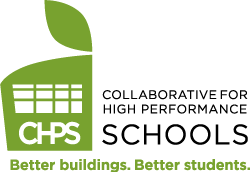
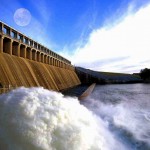 According to the U.S. EPA, if all U.S. households installed water-efficient fixtures and appliances, the country would save more than 3 trillion gallons of water and more than $18 billion dollars per year.
According to the U.S. EPA, if all U.S. households installed water-efficient fixtures and appliances, the country would save more than 3 trillion gallons of water and more than $18 billion dollars per year.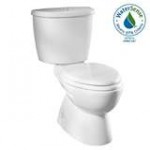 Toilets are often the source of the most water use (and water wasting) within a home, accounting for nearly 30 percent of an average home’s indoor water consumption. If you have a toilet(s) that uses more than 1.6 gallons of water per flush (gpf)—as do almost all toilets installed before 1994—replace it with one of the following:
Toilets are often the source of the most water use (and water wasting) within a home, accounting for nearly 30 percent of an average home’s indoor water consumption. If you have a toilet(s) that uses more than 1.6 gallons of water per flush (gpf)—as do almost all toilets installed before 1994—replace it with one of the following: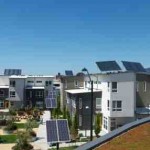




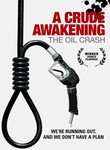
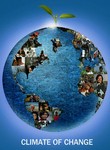



 In these times of unnatural disasters—such as BP’s oil-hemorrhaging drill “spill,” as well as extreme weather events caused by increasing climate volatility—more people are seeking ways to reduce their carbon footprint: i.e., their consumption of fossil fuels (petroleum, coal, and natural gas). We are all essentially junkies—or oiloholics—who don’t know how to live without these substances.
In these times of unnatural disasters—such as BP’s oil-hemorrhaging drill “spill,” as well as extreme weather events caused by increasing climate volatility—more people are seeking ways to reduce their carbon footprint: i.e., their consumption of fossil fuels (petroleum, coal, and natural gas). We are all essentially junkies—or oiloholics—who don’t know how to live without these substances.